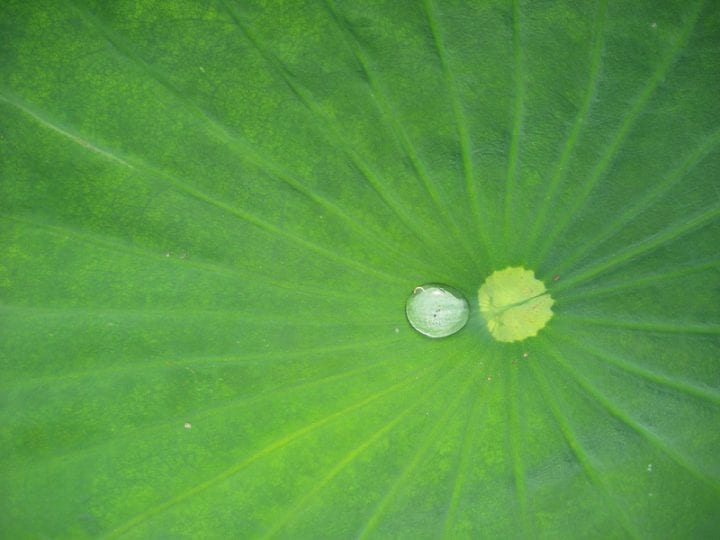In this lesson students explore the phenomenon of superhydrophobicity in nature and how engineers have created human-made products that mimic these properties.
Objectives
- Students will describe situations in which a superhydrophobic lotus-effect surface would be useful.
- Students will explain the difference between Cassie-Baxter and Wenzel wetting and how it applies to superhydrophobic surfaces.
- Students will demonstrate the transition between Wenzel and Cassie-Baxter wetting states.
This 30-50 min lesson for Grade 12 is part of a unit on surface tension hosted on the Teach Engineering website. Prior student knowledge and/or instruction on surface tension, wetting, and contact angle will be helpful in facilitating this lesson. Assessments and homework options are provided with the lesson documentation.
The lesson begins with students observing the lotus effect (via video and live demonstration) and developing possible possible explanations for the phenomena, what it does for the plant, and how it might be useful to humans if mimicked. Video demonstrations of lotus effect technologies are provided. Students then engage in an activity to test the lotus effect on leaves and cloth treated with a synthetic lotus-like superhydrophobic coating. Students observe and contrast the Wenzel and Cassie Baxter wetting states by creating and manipulating condensation droplets.
Standards Addressed
Next Generation Science Standards
- HS-PS2-6. Communicate scientific and technical information about why the molecular-level structure is important in the functioning of designed materials. (Grades 9 – 12)
International Technology and Engineering Educators Association – Technology
- Knowledge gained from other fields of study has a direct effect on the development of technological products and systems. (Grades 6 – 8)
- Chemical technologies provide a means for humans to alter or modify materials and to produce chemical products. (Grades 9 – 12)






